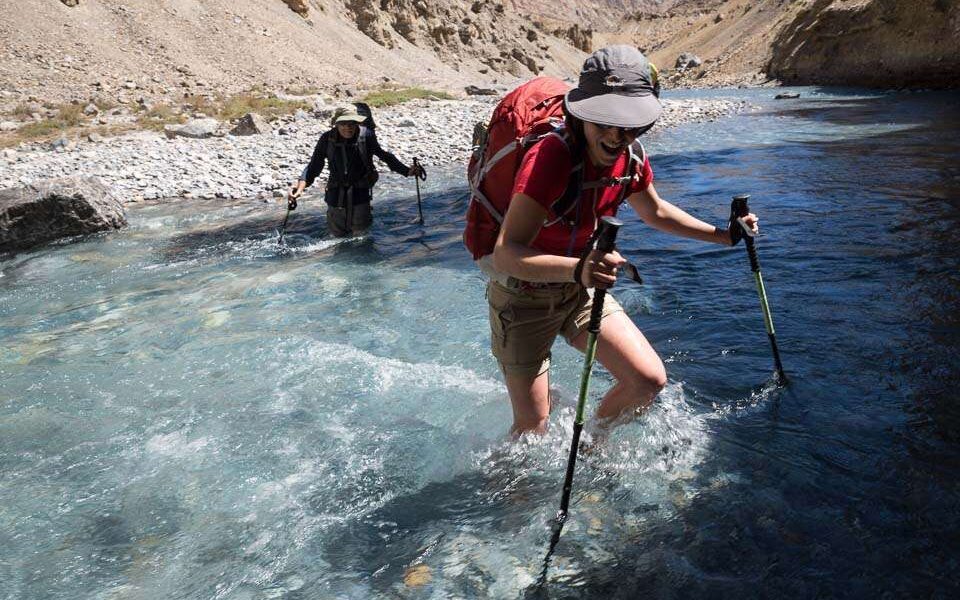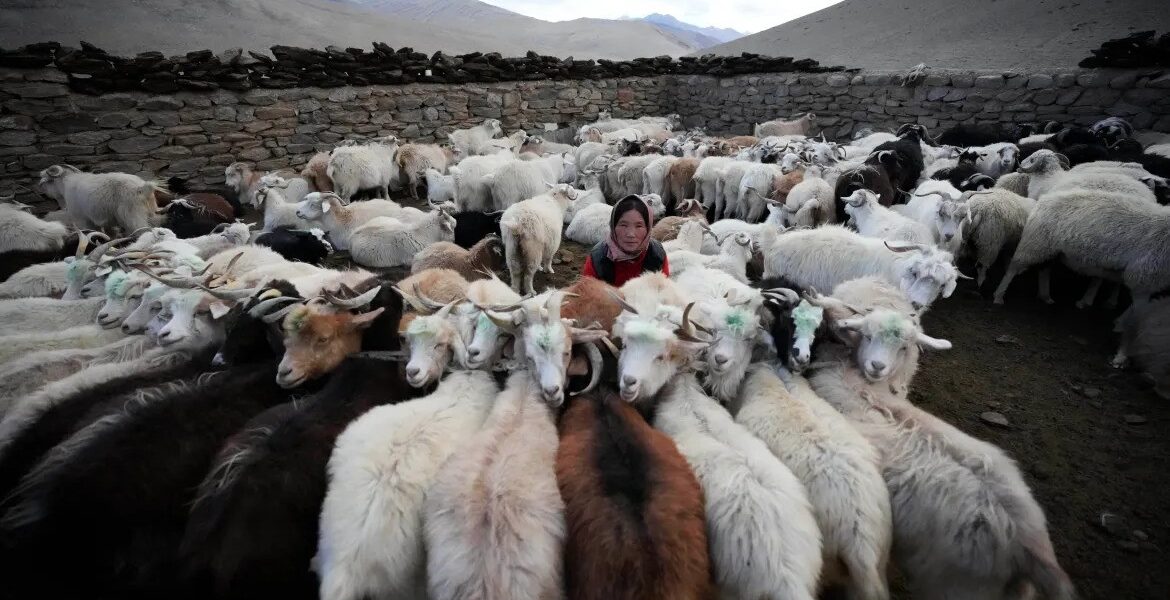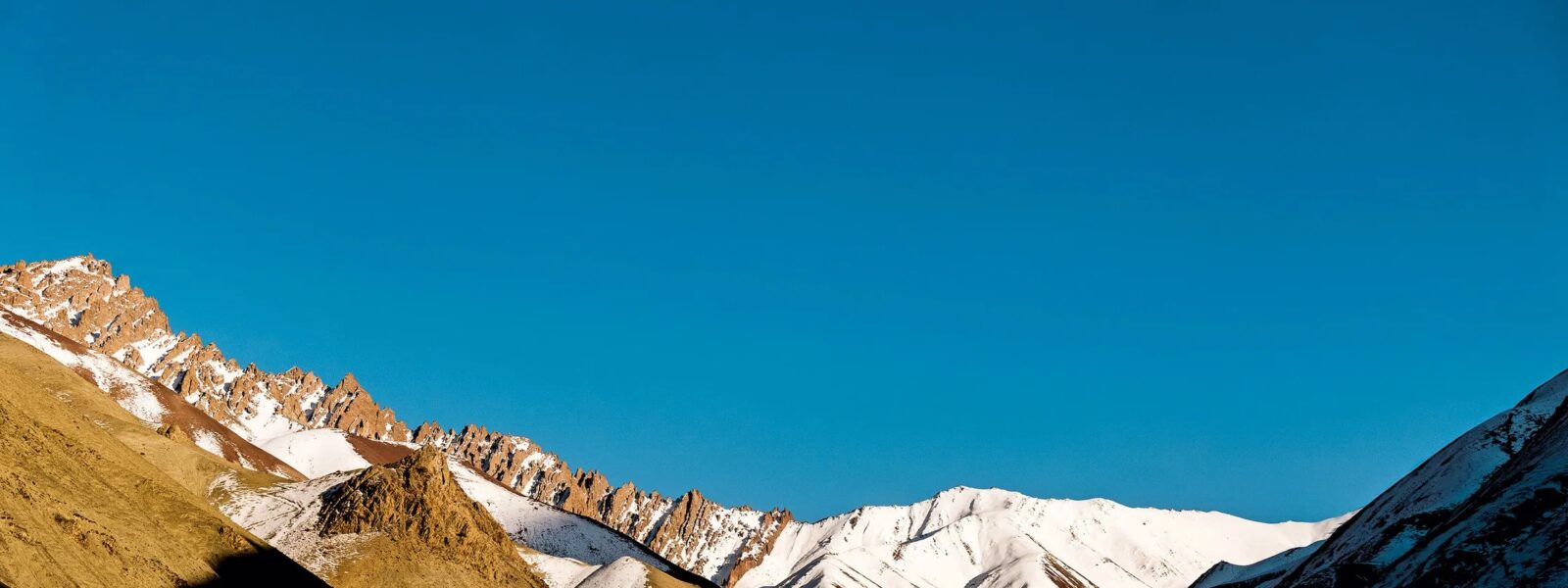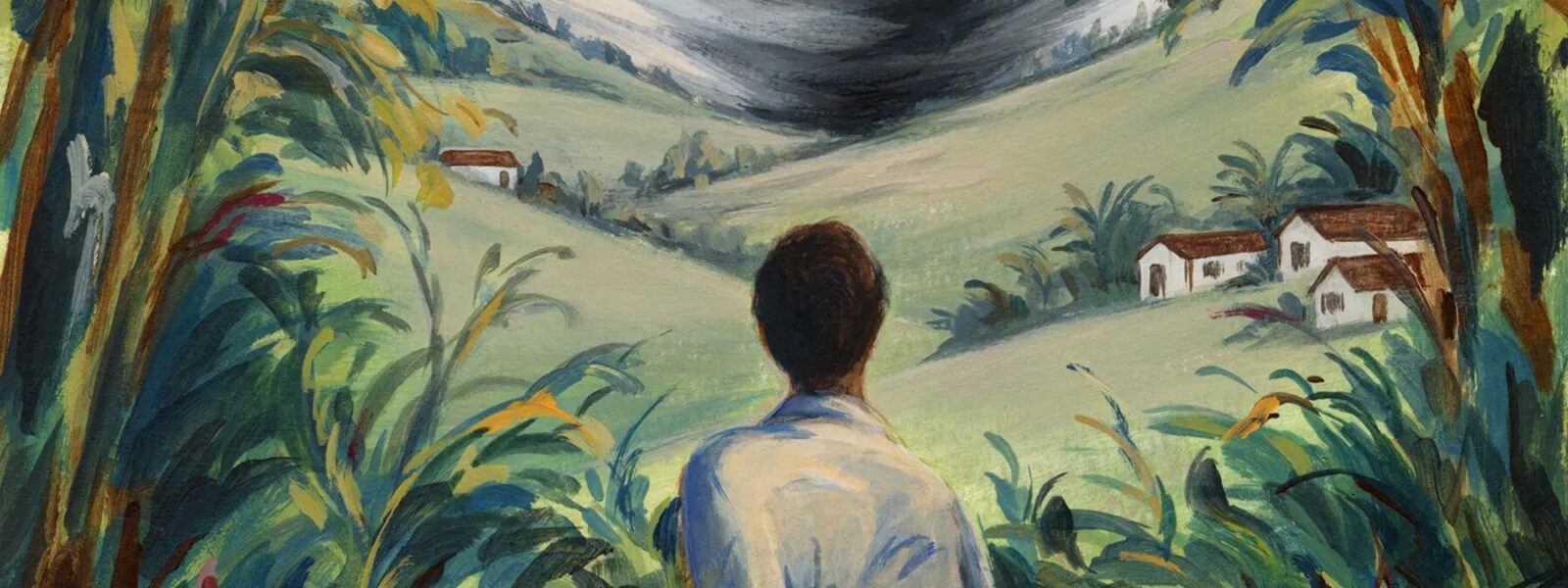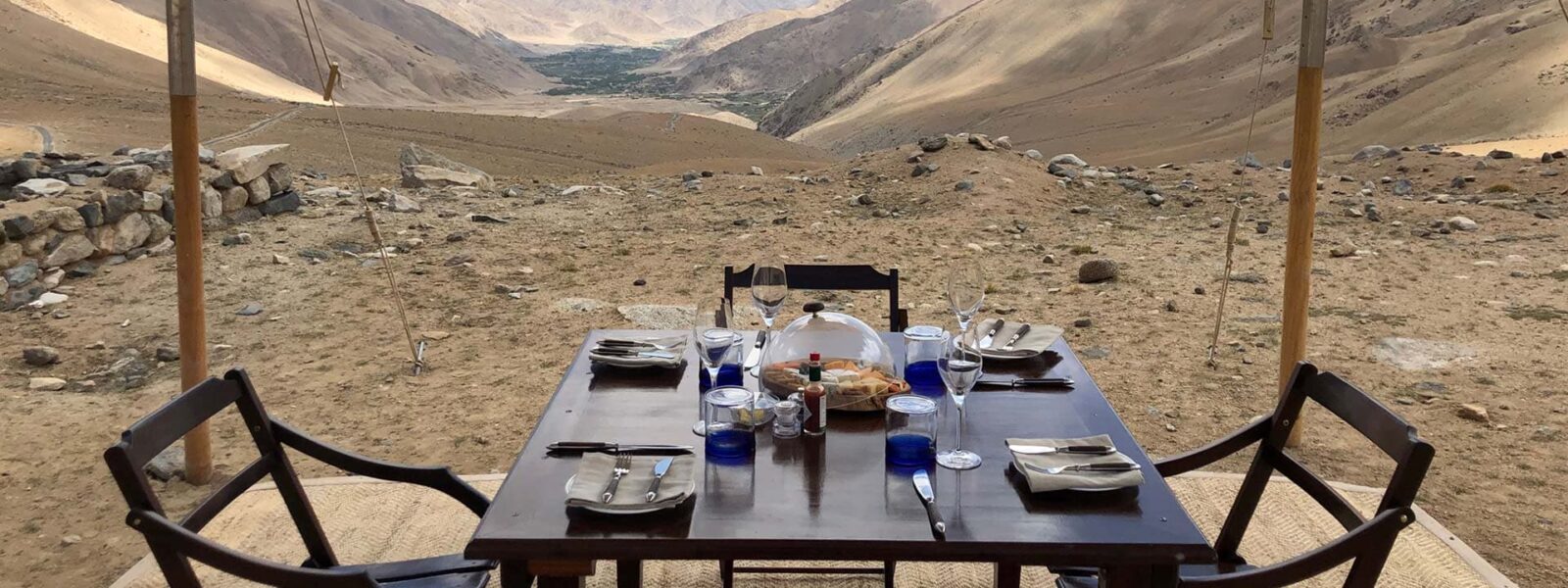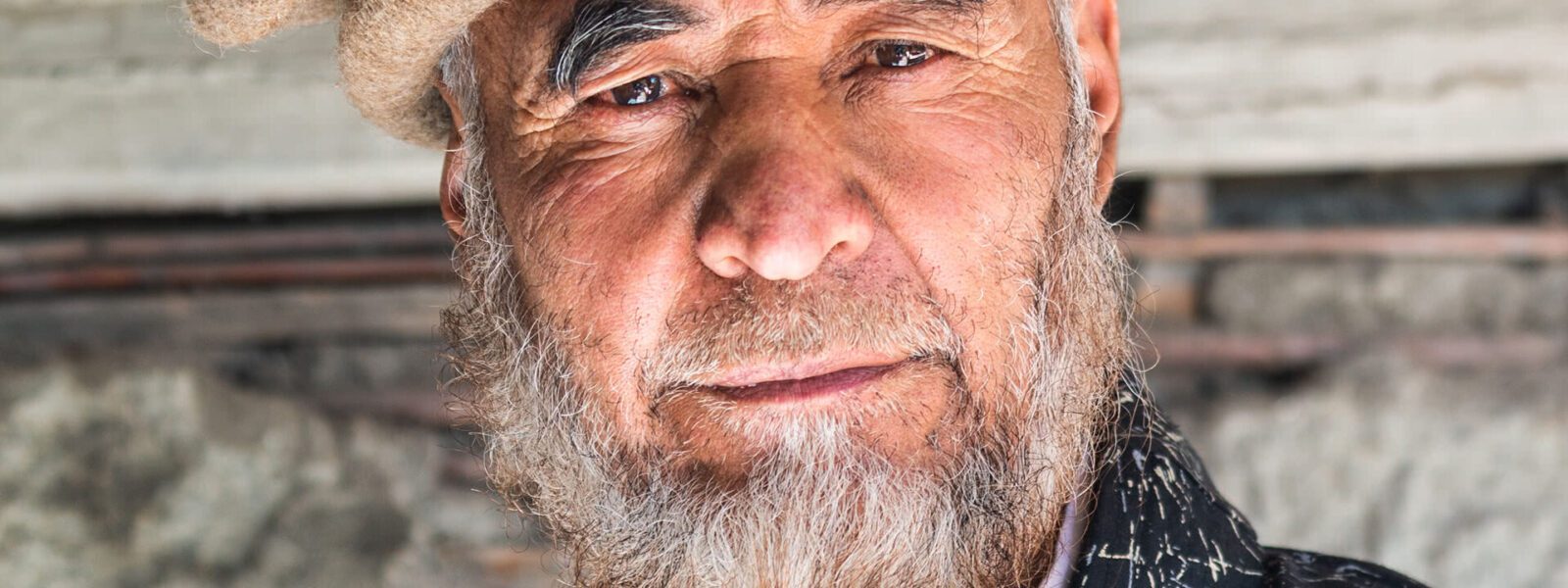Where the Map Ends and the Journey Begins
There are journeys that begin with a guidebook, a reservation number, and a checklist of must-sees. This wasn’t one of them.
It started with a photograph—an old one—of a narrow trail hugging the side of a golden cliff, with prayer flags strung like whispers across the sky. No name, no geotag. Just a caption: “Ladakh, 1982.” That image settled somewhere deep inside me, stirring a longing I couldn’t quite name.
Months later, standing alone at the window seat of a small aircraft descending into Leh, the capital of Ladakh, I watched the barren mountains rising like ancient guardians from a sea of clouds. It was early morning, and the rising sun had painted the peaks in bruised gold and lavender. The plane wobbled in the thin air. My stomach flipped, but my heart steadied. I had finally arrived—not at a destination, but at the edge of something unknown.
What drew me to Ladakh was not fame or comfort, but the opposite: silence, solitude, and stories untouched by tourism’s noisy footsteps. I wasn’t searching for adventure in the usual sense. I was looking for the kind of stillness you only find when you’re far beyond the reach of Wi-Fi, hot showers, and expectation.
As a solo woman traveler, especially in the Indian Himalayas, the journey wasn’t just physical. It was deeply personal. In Europe, we often dream of the East as something distant and mystical. But Ladakh is no postcard cliché. It’s raw, high-altitude reality. You don’t walk into it without shedding something of your old self along the way.
From the moment I stepped onto Leh’s ancient soil, surrounded by crumbling stupas and crisp, oxygen-thin air, I knew this trip would leave footprints far deeper than the soles of my boots.
This is the story of a woman’s walk through Ladakh’s hidden valleys—not the famous trails crowded with selfie sticks and guided tours, but the forgotten paths that lead to old monasteries, whispering winds, and the edge of your own fears. Along the way, I found not just landscapes carved by ice and time, but echoes of something eternal within myself.
So if you’ve ever dreamed of getting lost somewhere beautiful, somewhere ancient, where the silence speaks louder than your thoughts—then come with me. The map ends here, but the real journey is just beginning.

Into the Fold of the Himalayas – Arrival in Leh
When I stepped out of the plane in Leh, I expected a sense of arrival. Instead, I felt a peculiar kind of stillness, as if the mountains themselves were watching. No horns blaring, no rush of taxi drivers shouting for attention—just the thin wind brushing over the tarmac and the strange clarity that comes at 3,500 meters above sea level.
The airport in Leh is modest—more mountain outpost than transportation hub—and that’s part of its charm. It forces you to slow down. The high altitude doesn’t allow for haste, nor does the culture. Everything in Ladakh seems to breathe slower, move deeper.
A local driver named Stanzin met me with a warm smile and a quiet nod. No small talk, just silence, as we wound through the narrow streets into the heart of Leh town. Prayer wheels spun in corners, whitewashed stupas stood solemnly along the roadside, and every rooftop seemed to hold a stack of firewood waiting for winter.
I spent my first few days adjusting—to the altitude, the light, the rhythm. Acclimatization isn’t just about letting your lungs catch up; it’s about letting your spirit attune to the stillness of this high-altitude desert. I sipped countless cups of butter tea in family-run cafés, wandered past crumbling mud-brick homes, and lost track of time watching the Himalayas shift color with every passing hour.
Unlike the bustling arrival points of Southeast Asia or the glittering alpine towns of Europe, Leh offers no pretense. It gives you dust, sacred silence, and wide open skies. And for a solo female traveler like me, it offered something even rarer—safety wrapped in gentleness. The kind you feel in a place that has learned to coexist with hardship.
This first chapter of my journey wasn’t about trekking yet. It was about listening. To the rustle of juniper branches, to the slow chants from a monastery across the valley, to my own thoughts unraveling in the quiet. I watched local women weaving apricot twigs into baskets, old monks feeding street dogs with one hand while turning prayer beads with the other. These were not tourist moments. They were life, unfolding gently.
For those arriving from Europe, Leh feels like another planet. But stay long enough, and it begins to feel oddly familiar—as if some part of you has been here before. You start to crave the silence, the slow mornings, the way every small act feels deliberate.
And then, just as you begin to settle in, the mountains call. Quietly, but firmly. The trails begin to tug at your soul. You sense it’s time—not just to walk, but to walk inward.

The First Step into Solitude – Choosing the Trail Less Taken
On my third morning in Leh, a thin layer of frost clung to the windowsill. The town stirred slowly—monks sweeping monastery courtyards, yaks trudging along backstreets, children skipping over patches of ice. I was supposed to meet a trekking guide that day, someone who could take me along the well-worn path to Markha Valley. But something in me resisted.
The Markha trail is stunning, no doubt. But it’s also familiar—written about, photographed, pinned, hashtagged. And I hadn’t traveled halfway across the world to repeat someone else’s journey. I wanted something quieter. More personal. I wanted to walk where the trails were thinner, where the stories weren’t already told.
I found that path over tea and apricot biscuits with a Ladakhi woman named Sonam. She spoke little English, but her gestures and the weathered map she unfolded on her kitchen table spoke volumes. She pointed beyond Likir, past the monasteries and villages I’d never heard of—names like Hemis Shukpachan, Sumda Chenmo, and Yangthang. Her finger traced trails that ran along riverbeds and through gorges painted with mineral colors.
These were the unexplored trekking routes in Ladakh. Paths taken not by tour groups, but by shepherds and pilgrims. Trails where the wind still carried secrets and where footsteps echoed for miles. I didn’t hesitate. That night, I packed lightly—one bag, a journal, a camera, and my curiosity.
Choosing this lesser-known path wasn’t about bravery. It was about listening. To that quiet voice we all carry—the one that whispers when the noise of everyday life finally fades. For many women, especially those traveling solo, it’s tempting to stay on the safe, marked route. But Ladakh has a way of pulling you deeper. Not recklessly, but gently—like a river guiding your feet.
I left Leh at dawn the next day. No fanfare. Just the crunch of gravel under boots, the breathlessness of the first ascent, and the feeling that I was stepping not just onto a trail, but into a version of myself I hadn’t yet met.
As I climbed higher, leaving the last mobile signal behind, I felt something lift. This was what I had come for: off the beaten path Ladakh, the silence of untamed valleys, and the first true step into solitude.
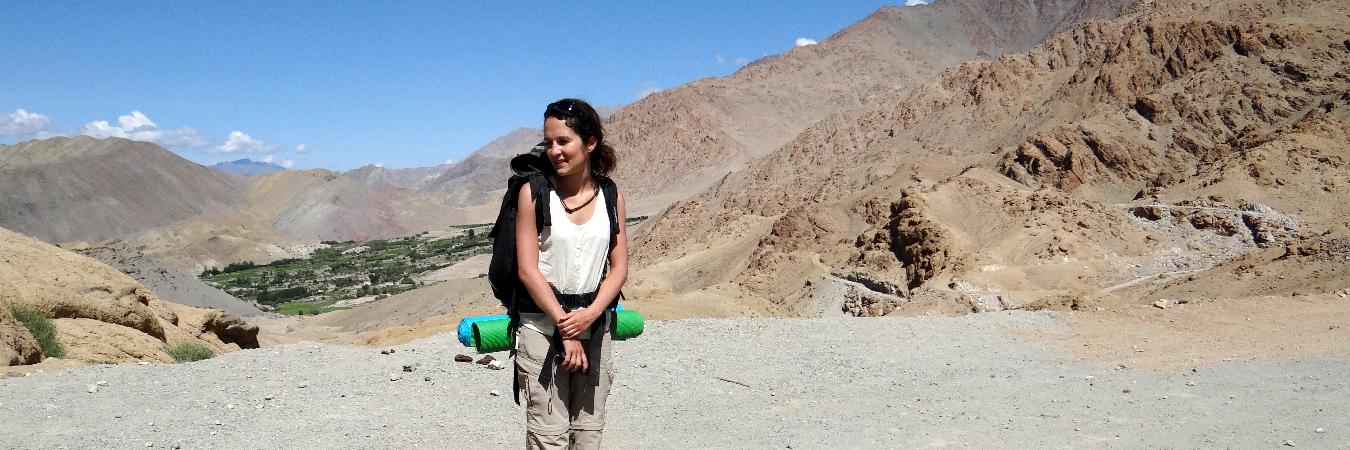
Walking Meditation – The Power of Solo Female Travel
In those first hours of walking through Ladakh’s high-altitude stillness, something unexpected happened—I stopped thinking. The usual noise in my mind, the lists, the doubts, the comparisons, began to fade into the rhythm of my steps. With every footfall, I found myself becoming part of the landscape, rather than just an observer of it.
There’s a kind of meditation that doesn’t happen on a cushion. It happens on winding trails, where your breath is shallow from the altitude and your body moves slowly out of necessity, not choice. Mindful trekking in the Himalayas isn’t just a spiritual phrase—it’s survival. You must listen to your breath, notice the scree under your boots, watch the shadows change on the rock face.
And as a woman walking alone through this vastness, I was hyper-aware—but not of danger. I was aware of presence. Every gesture from a passing villager, every distant chime from a monastery bell, every shift in wind direction felt magnified. With no companion to distract me, I had no choice but to fully inhabit the moment.
In Europe, solo travel for women often raises eyebrows—Is it safe? Are you lonely? Aren’t you afraid? But here, surrounded by mountains older than memory, I felt none of those things. What I felt was empowered. Not in a dramatic, flag-planting kind of way—but in a softer, quieter way. I was choosing my pace, my direction, and my silence.
The trail led through a narrow gorge dusted with ancient green lichen. A small stream followed me like a whisper, trickling over stones worn smooth by centuries of passage. Somewhere in the distance, a lone shepherd guided his yaks with the kind of grace that only comes from living this land. There were no signs, no trail markers, no Wi-Fi pings. Only instinct, and the trust that the mountains wouldn’t let me down.
This was more than a trek—it was an empowering solo female travel experience. Each day I rose with the sun, laced my boots, and walked not toward a destination, but into a deepening relationship with myself. I had come to Ladakh thinking I was escaping something. But now I realized—I wasn’t escaping, I was arriving.
There is a power in solitude. A clarity. And for women who dare to walk alone, especially in wild, remote places like Ladakh, that clarity becomes a kind of freedom. One that no one can give you. One you can only claim for yourself.

Valleys of Memory – Stories from Remote Villages
The further I walked, the fewer signs of modern life I encountered. The trails narrowed into footpaths, and the footpaths melted into silence. And then, just when I thought I was entirely alone in this high-altitude vastness, the village of Hemis Shukpachan emerged like a mirage—an oasis of apricot trees, whitewashed houses, and the scent of yak butter drifting on the wind.
This was no planned stop. There was no hotel reservation or printed itinerary—just the natural rhythm of the trail leading me to where I needed to be. A smiling grandmother waved me in from her porch, and within minutes I found myself wrapped in a yak-wool shawl, sipping salty tea beside a black iron stove. Her name was Padma. Her home was one of several family-run homestays in hidden Ladakh, part of a quiet, sustainable effort to share Ladakhi life with curious travelers.
There was no common language between us, only shared smiles and a lot of pointing. Still, we managed to communicate. She showed me photos of her children now working in Leh. I showed her a picture of my mother standing in a field in the French countryside. We nodded, understanding what only women across generations can understand: love, labor, and letting go.
In villages like Yangthang and Sumda Chenmo, stories aren’t told—they’re lived. A young monk in a crimson robe blessed my dusty boots without a word. A boy with wind-chapped cheeks showed me how to filter glacial water through stones. A farmer’s wife taught me how to press wild apricots into oil with a smooth stone roller. These moments were the essence of cultural trekking experiences. Unspectacular to some. Unforgettable to me.
At night, under a roof of carved cedar beams, I fell asleep to the sound of prayer wheels spinning gently in the wind. These remote villages in Ladakh weren’t simply destinations—they were memory-makers, teachers of patience, humility, and warmth. The kind of warmth that has nothing to do with central heating, and everything to do with human connection.
For travelers coming from the well-paved roads of Europe, there is a unique charm in getting lost on purpose—choosing uncertainty over convenience, real encounters over curated comfort. The hidden valleys of Ladakh are not just about what you see; they’re about what you feel when someone with rough hands and a generous heart welcomes you without hesitation.
These valleys taught me that you don’t need a common language to feel at home. You just need an open heart, a little patience, and the courage to follow the trail wherever it leads.
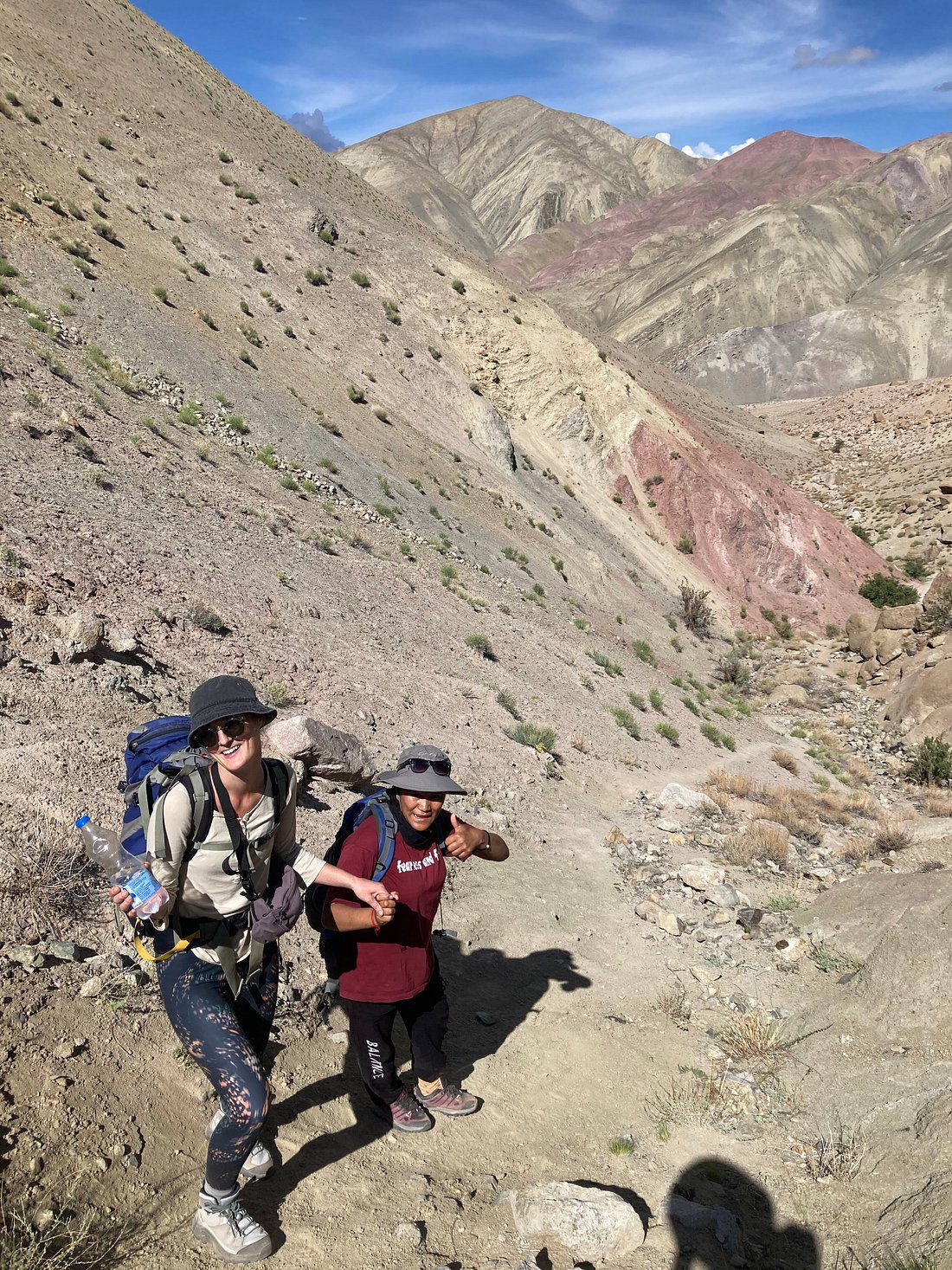
The Trail Within – Discovery, Discomfort, and Healing
It was on the third day of trekking—just after crossing a nameless ridge speckled with alpine moss—that my body finally protested. My shoulders ached from the pack, my knees throbbed from the descent, and a headache bloomed behind my eyes, the kind that only high altitude can bring. There was no shade, no rest stop, no café with ginger tea. Just the sun, the stone, and me.
For a moment, I sat down on a rock and allowed the silence to press in. It was a different kind of silence now—not the peaceful quiet of the first day, but the raw, uncomfortable silence of confrontation. There was nowhere to hide, not even from myself.
In Europe, discomfort is often avoided—soft beds, easy access, familiar signs. But here, in the bare-boned heart of the Himalayas, there’s no escape from the physical truths of your body or the emotional truths of your mind. And maybe that’s why so many women come here seeking more than scenery.
This was not a crisis. It was a turning point. A moment when I realized that healing through Himalayan nature walks is not a poetic phrase—it’s a physical, emotional recalibration. You shed layers, not just of clothing, but of expectation, fear, and ego. The mountain doesn’t care who you are, how much you earn, or what you look like. It only asks: Are you here? Are you present?
As I resumed my slow steps along the trail, something shifted. The pain didn’t disappear, but it softened. I began to notice the tiny flowers sprouting defiantly from the dust. The rhythm of my boots felt steadier. The ache in my shoulders reminded me I was strong enough to carry myself.
This was no longer about reaching the next village or ticking off a list. It was about being there—in that moment, in that body, with that breath. Every solo traveler reaches this place eventually. Some call it breaking down. I call it waking up.
For women traveling alone, especially in a land as remote and sacred as Ladakh, these moments become part of a deeply transformative journey. Not dramatic or cinematic, but profound in its subtlety. Introspective travel experiences aren’t glamorous, but they are unforgettable.
By the time the next monastery bell echoed through the valley, I had passed through something invisible but real. And with it came the kind of peace that can’t be booked in advance. It has to be walked into, blister by blister, breath by breath.
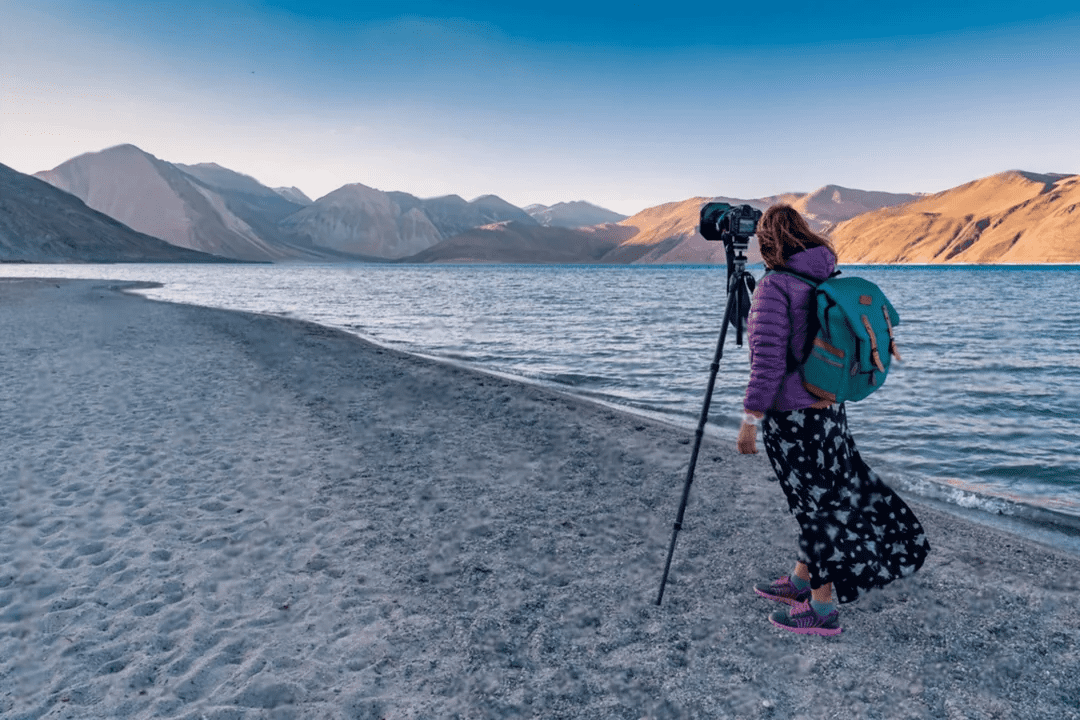
Nightfall at 14,000 Feet – Stargazing and Self-Discovery
By the time I reached the windswept plateau just beyond the last village, daylight had drained from the sky. The mountains that had once stood sharp and bright now blended into one another—blue, grey, black. There was no electricity here, no artificial light to define the night. Only the stars, bold and unashamed, painting the sky with a clarity I had never seen before.
At over 14,000 feet, everything is sharper. The wind is cleaner, the shadows longer, and the quiet… absolute. I wrapped myself in my sleeping bag and stepped outside the tent. Above me, the Milky Way spilled across the sky like a forgotten river of light. There was no need for a telescope; every constellation introduced itself like an old friend. Orion. Cassiopeia. The Pleiades.
I sat there for what felt like hours, letting the night hold me. The temperature had dropped below freezing, but I barely noticed. What I felt instead was awe—a rare and humbling emotion in our fast-moving world. This was not just a view. It was a communion.
Slow travel in Ladakh isn’t about moving from sight to sight. It’s about letting the land teach you something you didn’t know you’d forgotten. Here, in this high-altitude silence, I began to understand why so many spiritual seekers find their way to this corner of the Himalayas. It’s not just the landscape—it’s what the landscape does to your thoughts.
The more I gazed upward, the more my internal noise faded. No deadlines. No performance. No expectations. Just the soft breathing of the earth and the endless conversation between stars. I began to feel a kind of belonging—not to a place, but to the entire fabric of things.
This high mountain night was the closest I’d ever come to a nature retreat in the Himalayas. There were no guided meditations, no yoga mats, no retreat center brochure. Only presence. Only stars.
For those craving reconnection—not with Wi-Fi or notifications, but with something vast and unnamed—this is what a spiritual journey through Ladakh feels like. It begins not with a mantra, but with a moment. One that catches you unaware and leaves a trace on your soul.
As I finally crawled back into the tent, I realized I hadn’t spoken a word in hours. And yet, I had never felt more understood.
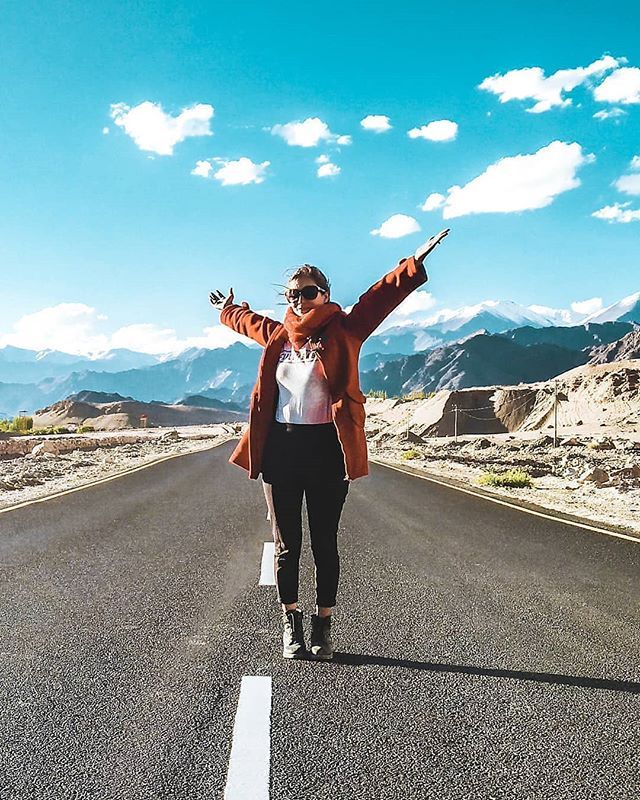
Homeward, but Changed – The Woman Who Returned
Returning to Leh felt strangely unfamiliar. The same streets I had walked a week ago now looked different—not because they had changed, but because I had. The weight of my pack was lighter, but my heart felt heavier, full with all that I had seen, heard, and become in the valleys beyond the horizon.
Back in the guesthouse, surrounded by soft pillows and warm water, I should have felt comforted. But what I longed for was the silence of high-altitude nights, the sound of yak bells in the morning, the smell of juniper smoke curling from stone chimneys. I missed the rhythm of walking, of rising with the sun and falling asleep with the stars.
A local woman I had met before my trek stopped me on the street and said in her soft Ladakhi accent, “You look different. Peaceful.” I smiled, unsure how to answer. Because how do you explain to someone that a landscape has rearranged your soul?
Empowering travel stories from women in Ladakh aren’t always dramatic. Sometimes they are quiet revolutions—walked into, step by step. I hadn’t scaled great peaks or broken records. But I had listened deeply. I had walked alone and returned stronger. Not louder. Just steadier.
For those considering a similar journey—especially solo female travelers—know this: solo travel inspiration from Ladakh doesn’t come from the guidebooks. It comes from the moments you didn’t plan. The path you almost didn’t take. The tea offered by a stranger. The mountain that challenged you. And the part of yourself you rediscovered in the silence.
And yes, there are practical things too: bring good boots, drink more water than you think you need, respect the altitude. These are high altitude trekking tips you’ll find on every blog. But what you won’t find is how this place rewires your senses. How the dry air clears your thoughts. How the act of walking becomes a conversation with something greater.
When I boarded my flight out of Leh, I knew I was carrying more than souvenirs. I was carrying a new way of seeing the world—and myself. Slower. Softer. Stronger. The kind of strength that doesn’t announce itself, but lingers in the way you walk, speak, and listen, long after the trail has ended.
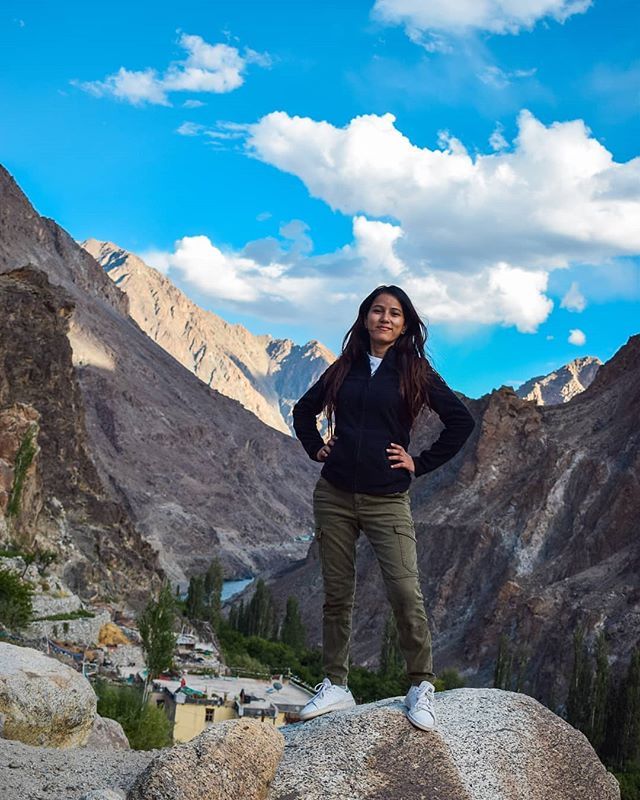
Practical Wisdom – For Women Seeking Their Own Hidden Path
Every journey leaves you with stories. But some journeys also leave you with tools—small, vital bits of wisdom that you carry long after the trail disappears behind you. If you, too, are drawn toward the quiet paths of Ladakh—especially as a woman traveling alone—then let this be your guide: a blend of experience, caution, and wholehearted encouragement.
First, trust your instincts. Ladakh is one of the safest regions I’ve ever traveled through as a solo woman, but intuition is still your best compass. If a path feels wrong, wait. If a person feels off, walk away. And if a village feels like home, stay an extra night. This is the kind of journey where your gut leads more than your GPS.
Pack light, but smart. High-altitude trekking is less forgiving than you expect. Your gear should serve you—not overwhelm you. Invest in broken-in boots, a reliable filter for glacial water, a sleeping bag rated for cold desert nights, and a power bank that works when your phone loses all signal but still lights up your journal entries under the stars.
For first-timers, consider joining a women-only trek in India or working with organizations that specialize in female-led Himalayan trekking. These aren’t just logistical conveniences—they’re communities of support. Fellow travelers, female guides, and local host families become part of the story you carry home.
Respect the land. Ladakh is fragile. Every step leaves an imprint. Choose treks that practice eco-friendly trekking experiences in Ladakh. Carry your waste. Refill water instead of buying plastic bottles. Stay in homestays rather than hotels, and tip generously—hospitality here often goes beyond business; it’s personal.
And most of all: go slowly. Don’t chase peaks or rush through valleys. The real magic of this place is not in its extremes, but in its stillness. Let the silence work on you. Let the wind tell you where to pause. Let your journey be more than movement—let it be meaning.
I wrote this for the woman standing at the edge of a decision, wondering if it’s too late, too risky, or too far. I promise you: it’s not. Ladakh is waiting—not with promises of luxury, but with the kind of quiet that rewrites you.
So lace your boots. Zip your pack. Take one step, and then another. The hidden valleys are still out there. And they’re more than ready to meet you halfway.
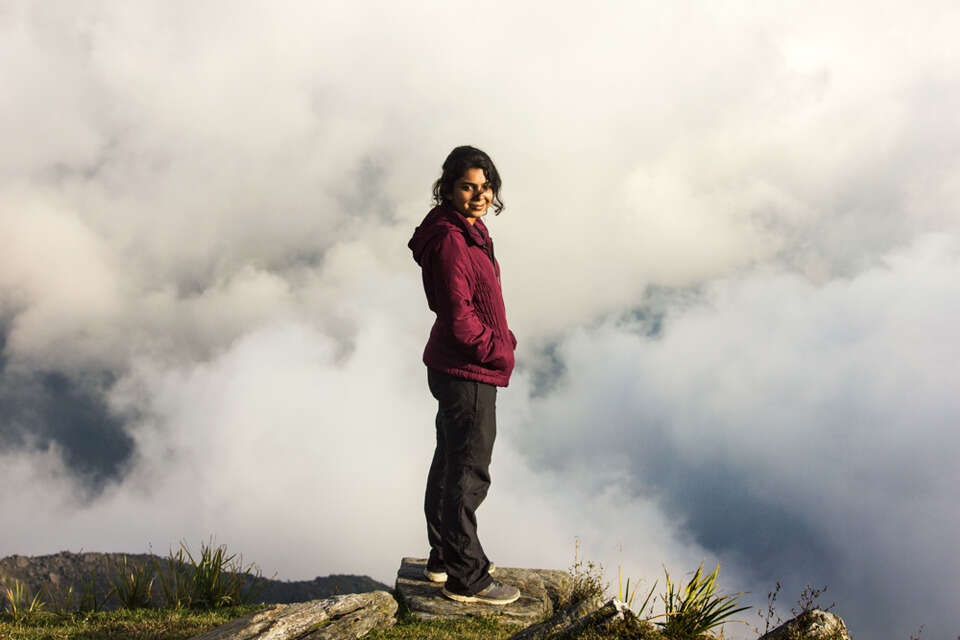
Closing Thoughts: The Horizon is a Mirror
When I first came to Ladakh, I thought I was chasing something far away—a place, a feeling, a memory of freedom I couldn’t quite name. I believed the horizon would offer me something new, something unknown. And in many ways, it did. But what I didn’t expect was how much of that horizon would reflect back at me.
The mountains didn’t just surround me—they revealed me. The valleys didn’t just stretch endlessly—they echoed the quiet corners of my soul I had long forgotten to visit. Every ridgeline I climbed, every stream I crossed, every night I spent beneath that ancient sky brought me closer to myself.
For anyone reading this—especially the woman wondering whether she can, whether she should—this is your sign. You don’t need to be brave. You just need to begin. Because once you do, the road will meet you with unexpected kindness, and the silence will speak louder than fear ever could.
What I found in Ladakh wasn’t just solitude. It was perspective. A reminder that the world is wide and wondrous, but also quiet enough to hear your own voice again. And in a time when noise is constant and expectations press heavy on our shoulders, that kind of silence is nothing short of sacred.
So wherever you are—Paris, Prague, Berlin, Lisbon—know this: the Himalayas are not out of reach. The hidden valleys are not a fantasy. They are real, and waiting. Not just to be seen, but to be walked, felt, lived. And when you return, as I did, you’ll find the trail doesn’t end at the airport gate. It continues, quietly, inside you.
Because the horizon was never a finish line. It was always a mirror—showing you what was possible, and who you’ve always been.
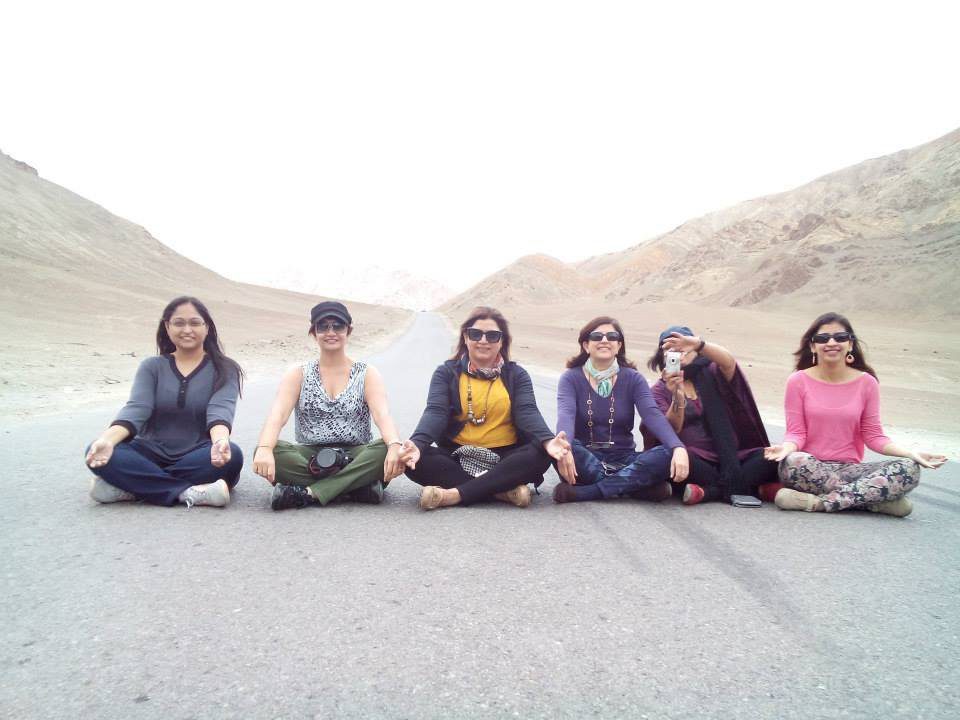
About Elena Marlowe
Elena Marlowe is a European travel columnist, mountain wanderer, and seeker of stories hidden in the folds of the world’s wildest landscapes.
She writes not from guidebooks, but from the soles of her dusty boots, from quiet homestays in forgotten valleys, and from journals stained with butter tea and Himalayan rain.
With a background in cultural anthropology and a heart that leans toward silence, Elena’s work invites readers—especially women—to travel not just outward, but inward.
When she’s not on the trail, you’ll find her in a small stone cottage in the French Alps, growing herbs and writing by candlelight.
Her columns celebrate slow travel, solo discovery, and the radical beauty of walking where no one expects you to.

